Don’t believe in cosmic inflation? You’re not alone, but you’re probably wrong.
Even if the BICEP2 results turn out not to be from gravitational waves left over from inflation.
“For my part I know nothing with any certainty, but the sight of the stars makes me dream.” –Vincent Van Gogh
There’s a dead man lying in the street, a single hole going all the way through his head: small in his forehead and larger at the back of his skull. How could this have happened? What you might realize, at this point, is that you can figure the answer out with the right detective work, if you can gather the right clues: can you find the bullet; can you find people with the motive; can you trace the weapon back to its possessor; can you find evidence of a struggle or another presence on the scene; can you maybe even find the victim’s blood on a potential assailant?
If you can stitch together the right pieces of evidence, you can reach an inescapably compelling conclusion even though no one was there to witness the crime as it occurred. Believe it or not, the entire Universe can be figured out using the same type of detective work.
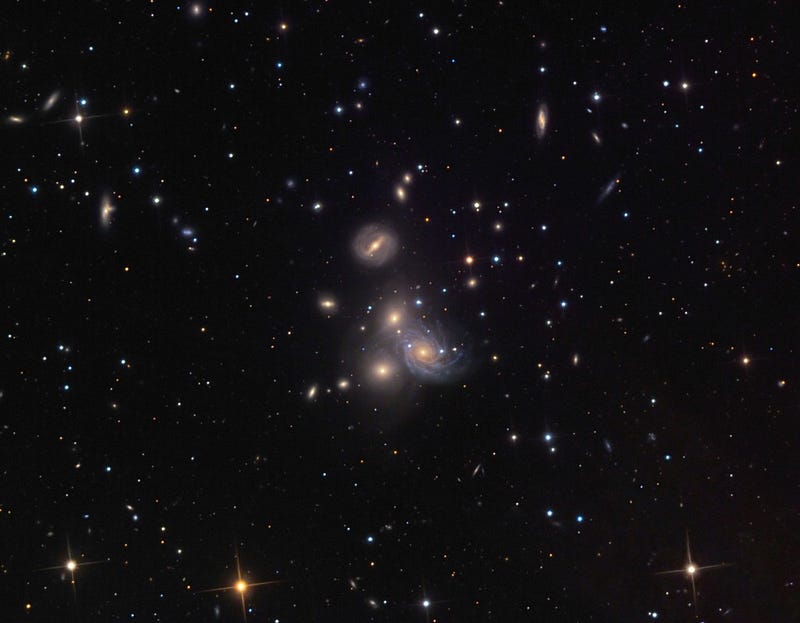
Instead of forensic pieces of evidence, we have the full set of observable phenomena in the Universe. Instead of blood spatter and bullet trajectories, we have experiments that we can set up and perform to test our ideas; instead of fingerprints and fiber matching we have simulations and the laws of nature. Combined, we can reject ideas that don’t fit, we can confirm the ideas that do, and in the end, the single, coherent scenario that best explains the full suite of all the observed phenomena and also leads to new, potentially observable predictions that can then be confirmed or refuted stands as the leading scientific theory describing the Universe.
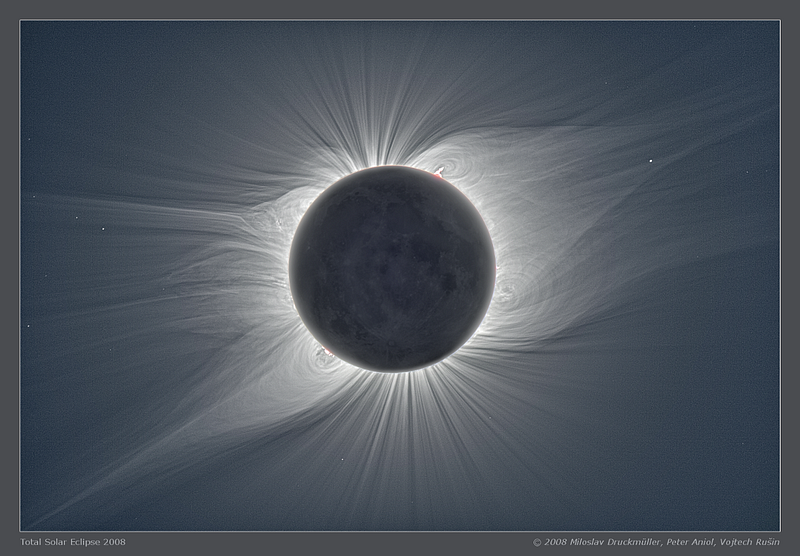
A century ago, that was how General Relativity became our accepted theory of gravity. Newtonian gravity was known to not completely describe the laws of nature at high velocities or in strong gravitational fields, but General Relativity not only correctly predicted phenomena like the dilated lifetime of unstable, relativistic particles and the fine details of the planetary orbit of Mercury, but also made new, testable predictions about the gravitational bending of light by matter, about gravitational redshift, and about gravitational radiation, among many others.
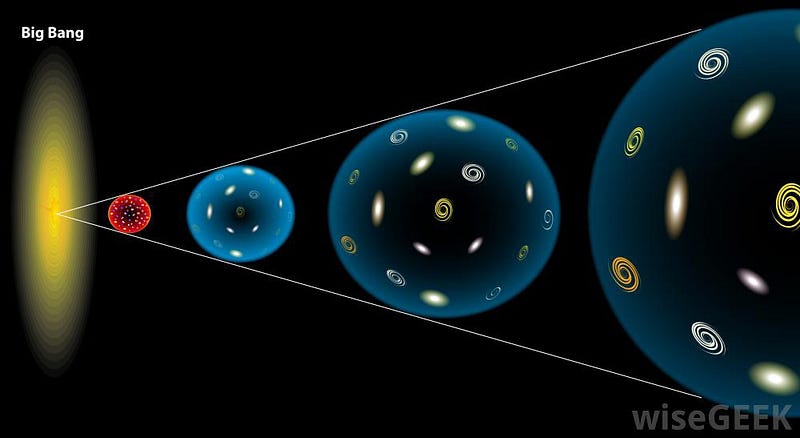
A half-century ago, the Big Bang became our accepted theory of the origin of the Universe. Building upon the framework of General Relativity, it not only explained the observed phenomenon of the relationship of the galactic distance scale with increasing redshift, but made new predictions about the abundances of the light elements in the Universe and of a universal background of blackbody, low-temperature radiation that ought to be left over from the Universe’s infancy.
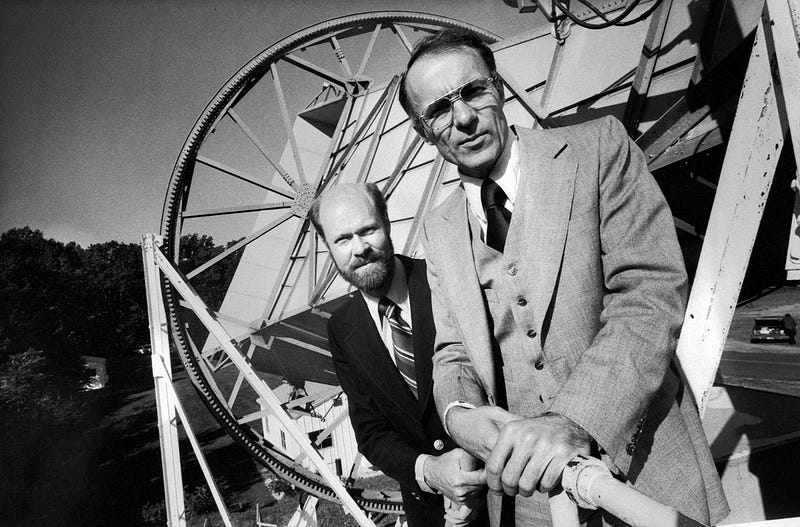
And about a generation ago, a new idea — the theory of cosmic inflation — was put forth in an attempt to explain where the Big Bang itself came from. Inflation posits that before the Universe was full of matter and radiation, before it was expanding and cooling, before it began to clump and cluster together as gravitation pulled denser regions together over time, it was in a state where it was dominated by energy intrinsic to space itself, expanded exponentially and remained at a constant temperature, and fluctuations away from perfect homogeneity were stretched across the Universe.

This was a powerful postdictive idea, because up until that point there were no good explanations as to why the Universe would exhibit no discernible spatial curvature, as to why it would appear to be almost the same exact temperature everywhere, and as to why there would be no leftover high-energy relics (like magnetic monopoles) observable in the Universe. The potential explanation it provided for those phenomena alone made it an appealing idea, but there would need to be predictive power as well. Even though there are many models of inflation that could be successful at this, it is not, as some erroneously claim, a so-called Alice’s restaurant, where you can cook up any model you like to get any prediction out of it that you like.
But that’s not true; there are some predictions that they all have in common.
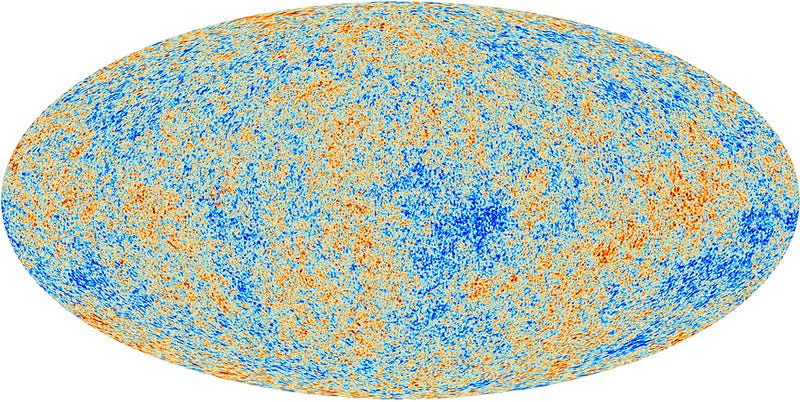
When we look at what the density fluctuations looked like in the early Universe, we should find that they were almost (but not perfectly) scale-invariant, meaning that the magnitude of imperfections in density — where some regions have more matter than others and some have less — should be almost the same whether we look at scales that take up 90 degrees on the sky or scales that take up a ninetieth of a degree on the sky.
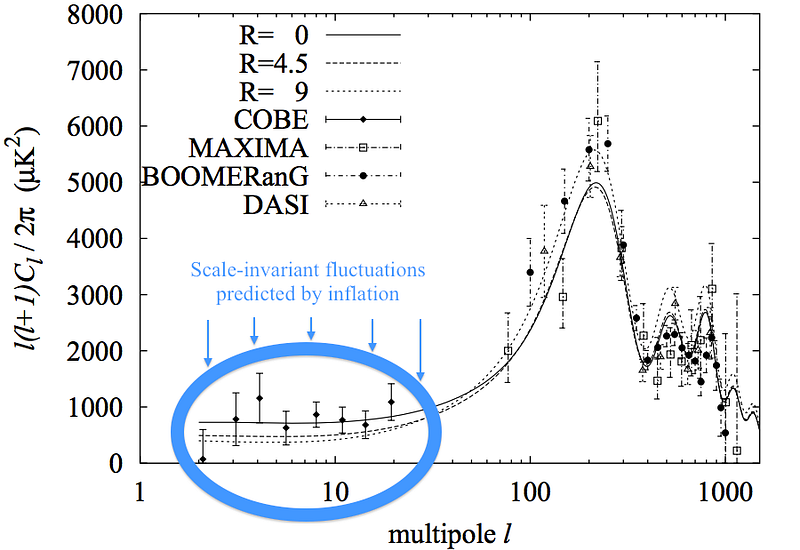
As the COBE satellite first observed in the early 1990s, the spectrum of those fluctuations does appear to be very close to scale invariant. With the next generation of measurements — from first WMAP and then Planck — we were able to find out that not only is the spectrum very close to scale invariant (which would correspond to n=1, below), but it was slightly but significantly different from n=1, coming in at just about n=0.96-to-0.97.

Another prediction that it made is that this spectrum should run-or-tilt slightly (still beyond the reach of our observations), and still another was that there should be a spectrum of gravitational wave fluctuations left over from inflation. Again, the specific characteristics of that spectrum — including its magnitude and frequency dependence — are somewhat dependent on what model we choose, but they should be able to be detected if we build sensitive enough equipment.
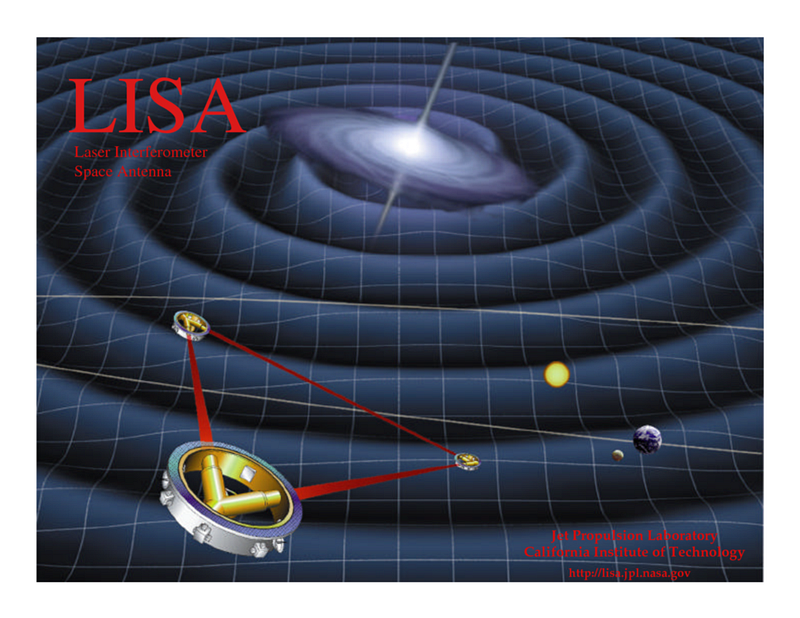
One way to confirm this would be to attempt to detect these gravitational waves directly, by building something like the Laser Interferometer Space Antenna (LISA), above. This was proposed, highly ranked, partially funded, and then killed until at least the 2030s. But there was another, indirect method that offered hope, although only for a certain class of inflation models: to look for the signature in the polarization of light from the cosmic microwave background!
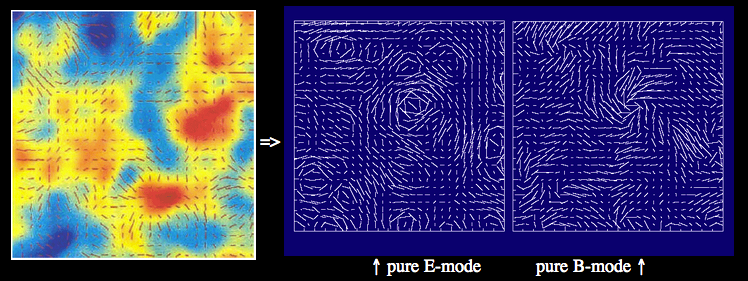
As light travels through the Universe, it interacts with everything in its way, including charged particles and gravitational radiation. Some of those interactions can cause the light — since it is an electromagnetic wave — to become polarized in a few different ways, and those signatures should allow us to reconstruct just how it was polarized and due to what along its journey.
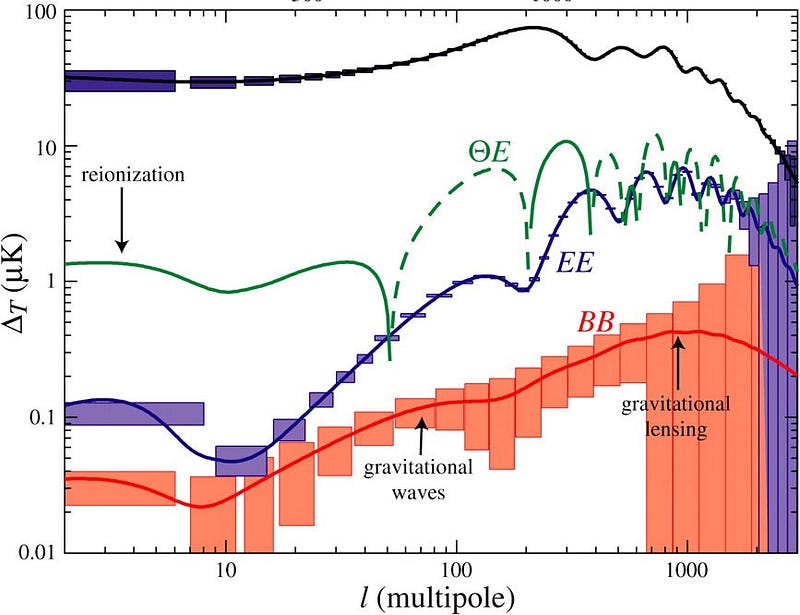
If the polarization comes from inflation, it should affect the B-modes on particular scales in particular ways, and it should affect all frequencies of light in the same fashion, irrespective of the light’s wavelength.
At only one frequency but at the correctly anticipated scales, that was what the BICEP2 team reported the detection of at a significance of 5.2σ.

Now, whether this detection holds up, whether it turns out to be confirmed by other experiments (and it needs to be), at other frequencies (and it needs to be), and whether it turns out to be caused by gravitational radiation or by a different source — and although there are rumors that the signal may be from the Milky Way’s dust, the BICEP2 team stands by their reported results — cosmic inflation will still be the leading theory, with the most predictive power, and the only game in town that explains all the aforementioned phenomena that I laid out for you above.
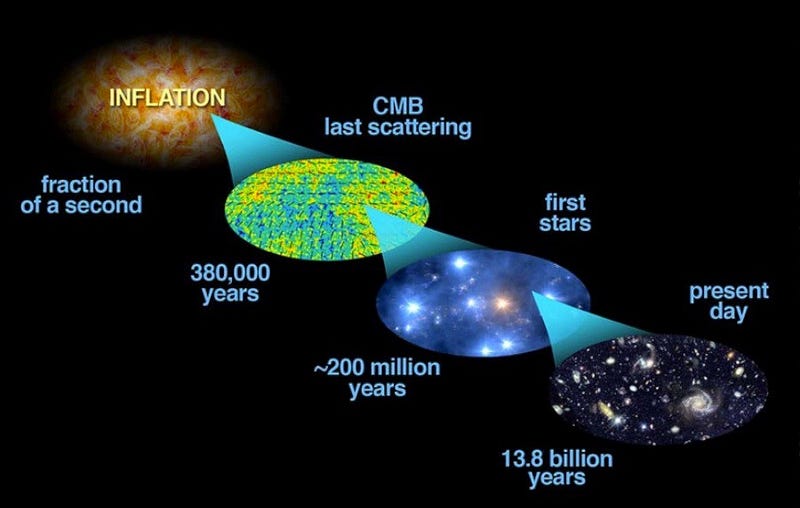
If BICEP2 turns out to be wrong, it means that the class of models currently favored will no longer be so, and we’ll have to look at other models. (Some of which can be found here.) But inflation will still be the best theory we have — and one accepted by the overwhelming majority of scientists working on it — unless something better comes along. You don’t have to believe in it, of course, but you do have to consider that it explains what we had observed that was previously unexplained, it made predictions that have since been verified by new observations, and we know exactly what we need to do to verify even more of its predictions. You can’t ask for more from a scientific theory than that!
So don’t place all your inflationary hopes on this one result. We need to check and double-check whether it’s robust or not, and even if it’s not, the Universe is still making a very strong case that inflation has it exactly right. We’ve already found the smoking gun in this detective story; it’s just a question of whose finger was on the trigger.
Have a comment? Weigh in at the Starts With A Bang forum on Scienceblogs!





